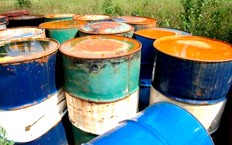Hazardous Waste Resources
January 1st, 2020
Welcome to CEI's Hazardous Waste Assessment & Remediation Resources page. Click on a topic below for information, resources and links.
Brownfields Tax Credit Program - Free Assessment
Brownfields
According to the U.S. EPA there are over 450,000 Brownfields in the U.S. A Brownfields Inventory is a valuable planning tool for communities looking to identify and prioritize areas for redevelopment. Read on about Brownfields and how a comprehensive or area specific inventory by CEI can help your community get quickly on your way to economic redevelopment and community revitalization.
What is a Brownfield?
A Brownfield generally refers to land or property that is abandoned or underused due to environmental contamination concerns. It is defined as ‘abandoned, idled or underused industrial and commercial properties where expansions or redevelopment is complicated by real or perceived environmental contamination’.
How Do Brownfields Impact a Community?
Brownfields can have a tremendous financial, social and environmental impact to an area. These abandoned properties generate little tax revenue, bring down property values and can create safety, environmental and social problems. Investors often look for undeveloped greenspace, promoting urban sprawl and moving much needed economic development out of the community.
Why Redevelop a Brownfield?
Brownfield redevelopment can provide outstanding benefits to a community. Some of these include:
Community revitalization
Job creation
Increased property values and tax receipts
Healthier atmosphere and a cleaner, safer environment
What Incentives Are Available for Brownfield Redevelopment?
There are a number of Federal and State programs that provide funding for Brownfield cleanup and redevelopment. This assistance can be provided directly to local governments and/or property owners depending on the program. Incentives include:
Grants and low interest loans
Tax incentives
Liability protection
Streamlined remediation/redevelopment
Why Hire CEI To Complete a Brownfield Inventory?
A Brownfield Inventory can help a community identify and prioritize Brownfield locations and to focus redevelopment efforts. The inventory can uncover and easily present the assets and liabilities of a property in terms of redevelopment potential. Most importantly, the inventory and its methodology can serve as a reference to substantiate requests for assistance from the many federal and state Brownfield programs that are readily available.
CEI’s methodology to identify the top rated potential Brownfield sites for redevelopment opportunities focus on identifying sites within a community that would be eligible for grant funding. Grants can provide funding to assess and remediate Brownfield sites, therefore, sites that meet eligibility requirements for these grants would have potential funding for redevelopment in the future. In addition, many of the criteria for federal grants are also applicable to various state grant funding programs.
Brownfields Tax Credit Program
The recent Brownfields Tax Credit program, which targets individual developers, provides tax credits to remediate environmental contamination where the contamination was not caused by the taxpayer. Taxpayers can use or transfer the tax credits since there is a secondary marketplace for the trading of these tax credits.
The tax credits apply to “property boundaries” not necessarily the “site boundaries” as defined by the MCP. So purchase and sale, and access agreements to implement the work must demonstrate “site control”. The tax credits can amount to 50% of the eligible costs of a qualified remediation when the permanent solution does not contain an Activity and Use Limitation (AUL), so the more you spend and the cleaner the site the more you get back. Even if the site requires an AUL, that amounts to 25% of the eligible costs.
This program holds a bright future for real estate and remediation efforts alike, however working with individuals who have experience with tax credits can be a key component and the difference between a stalled project and financial success. Let’s just say it’s not for the CPA that does your taxes.
Click here for your free Brownfields Tax Credit Consultation!
Sand and Gravel Mines – Ensure Your Environmental Compliance
A mine in northern New Hampshire faced fines of up to $532,500 for violations of the Clean Water Act and the Oil Pollution Prevention Regulations (click here). Sand and Gravel Mines are subject to several Federal and State regulations aimed at preventing pollution, and it is your responsibility to know and be in compliance with them. Requirements for the discharge of process waters, stormwater, dewatering water can be confusing, and meeting water quality limits for turbidity, total suspended solids, pH, etc., in these discharges can be complex.
Massachusetts UST Owners Must Have Licensed Operators
On February 3, 2012, The Massachusetts Department of Environmental Protection (MassDEP) promulgated new regulations which require the Owners/Operators of underground storage tanks (USTs) to designate a Massachusetts-certified Class A, B and C operator for each UST system they own or operate.
For more information on Brownfields and CEI's hazardous waste assessment and remediation services, please contact Rebecca Balke, P.E. at [email protected] or Richard Cote, P.E., LSP at [email protected] or call 800-725-2550.






